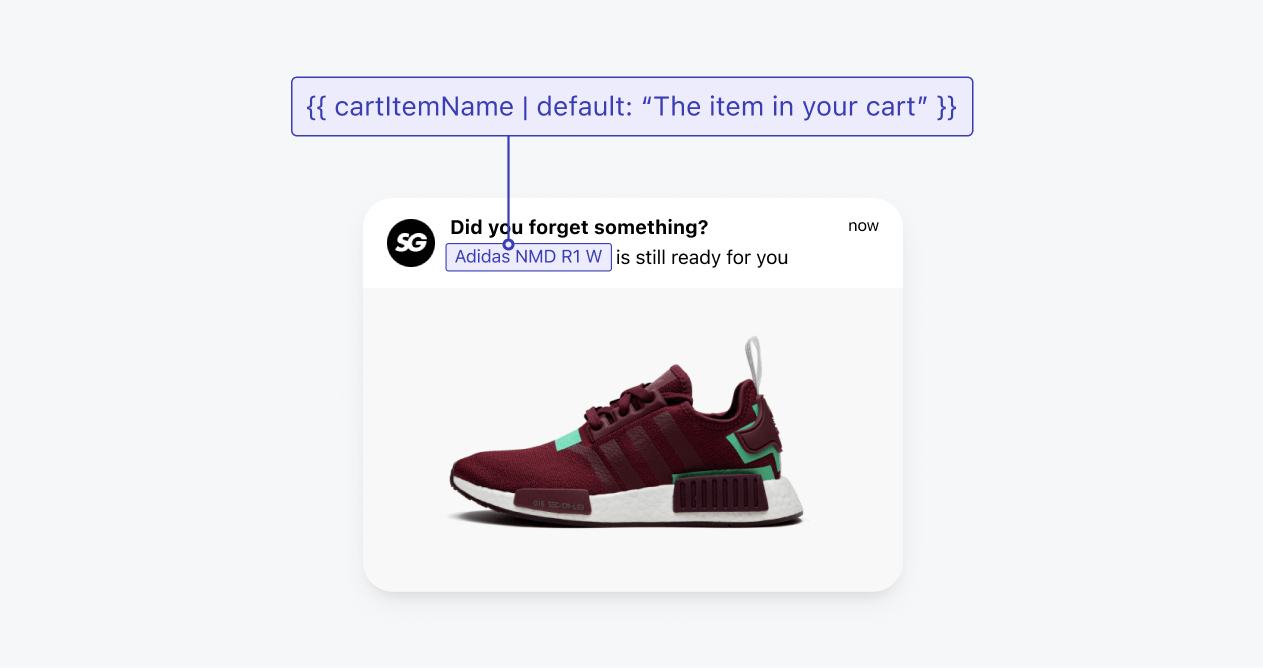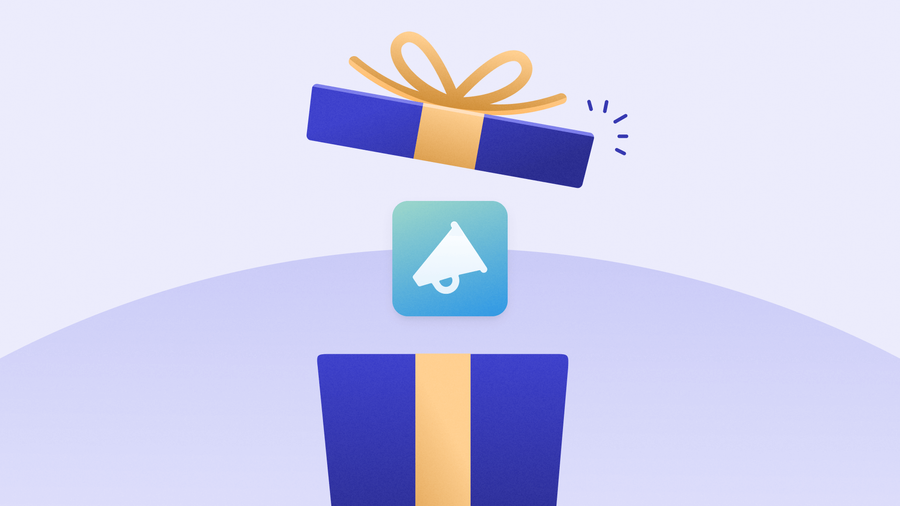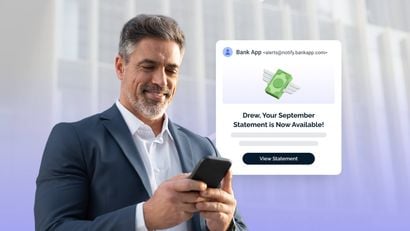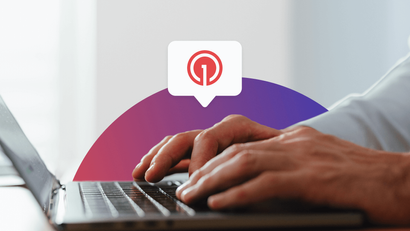An average of 1,271 new apps are released on the Apple App Store every single day. As ridiculous numbers go, that’s a solid one, but not very actionable for you. So let’s reframe it in a context a little more useful — unless your new mobile app has 1,271 distinct features to set it apart from your competition, you’re going to have a hard time driving downloads and maintaining user retention over time.
App marketing for new apps is the critical juncture on which the success of recently launched mobile apps hinges. At its core, it boils down to effectively communicating value to your target audience, creating awareness across multiple channels, and engaging users through compelling, personalized experiences.
The bad news? Nobody is going to give your fledgling app a spotlight to show off its one-of-a-kind functionality and dazzling UI. The good news? You are perfectly capable of making a spotlight of your own.
What's Below:
Ok, But Do I Really Need App Marketing For My New App?
“My app is leagues ahead of the competition in my category. If I let the users decide for themselves, I am confident they will learn our value naturally. Shouldn’t our tech speak for itself?”
Well, in a world where you don’t statistically lose 77% of your daily active users within the first three days after install… yes. But unfortunately, that’s not the world we live in.
Effective app marketing strategies differentiate your app from the polluted sea of competitors it’s swimming in. As your app marketing efforts drive user acquisition and early engagement, it plants the seeds of daily usage, and ultimately contributes to your app's long-term viability. Remember, you’re in it for the long haul, so we’re setting our sights on strategies to understand the user journey, build retention, and start off on the right foot with monthly active users (MAU) that actually stick around.
Setting the Stage With App Store Optimization
All mobile app marketing begins here. App store optimization, or ASO, describes the process of crafting your app store listing in a way that maximizes visibility and drives downloads. Not to make you nervous, but think of this as your audition, in front of a panel of millions of users ready to give you either their time or money (best case scenario, both!) If you nail this, you win their download and a chance to later win their lasting loyalty. But first, you must grab their attention with a relevant and convincing app listing.
There are a variety of metrics the Apple and Google app stores use to determine how high a given app ranks within their app store search engine. And to make matters more complicated, each has slightly different priorities. For example, Apple's app store algorithm relies more heavily on title keywords, whereas the Google Play Store app algorithm places more emphasis on keywords within your app’s description.
Nonetheless, these are generally the aspects of your app store listing you want to focus on most to rank higher and inspire downloads:
Keyword Research
Conduct keyword research to find high search volume, low competition keywords or phrases that align with your target audience. Without keyword stuffing, make sure these terms are used throughout your app title, subheading, and description. If your company already has high brand recognition, include your brand name in your title, along with a keyword or two — but keep it under 30 characters to avoid truncation!
App Icon
A large portion of successful app marketing boils down to visual flare. Design your app icon to convey the purpose of your app with simplicity and legibility. Your app icon should be consistent with the rest of your brand color scheme and designed to scale, whether it be visible on the app store or visible on users’ home screens.
App Store Reviews and Ratings
As you gain new users, use personalized in-app messages to encourage them to leave reviews and ratings on your app store listing. Social proof is one of the most impactful factors that influence app marketing success and ultimately, a download decision. Don’t forget to respond to your user reviews (both positive and negative) — this demonstrates transparency and a commitment to creating a satisfying experience for everyone.
Check out these strategies to improve your app store reviews and ratings!
App Store Localization
Localize your app and your app store listing to reach a wider, international audience with content that engages users around the world, being mindful of cultural nuances for each language.
Continuous App Updates
Update your app regularly to eliminate friction points, reduce churn, and strengthen quality engagement. Consider including a “What’s New” section in your app store listing to demonstrate that your app is continually listening to user feedback and improving its functionality. Users will be much more likely to remain patient and forgive the occasional in-app bug if they know there is a team working to remedy common pain points.
This is just a sampling of what app store optimization entails. For the full breakdown, including app store optimization metrics and examples of high-performing app listings, check out our full Guide to App Store Optimization!
Putting on a First Impression Clinic With New User Onboarding
Mobile user onboarding describes the process of getting new users up and running with your app quickly, efficiently, and with the information they need to achieve their goals. A successful onboarding sequence encourages feature adoption, strengthens app retention, and increases your monthly active users.
Typically mobile app user onboarding is broken down into three types, each with its own unique approach:
- Function-oriented onboarding — An onboarding sequence that teaches users how to use core features. These onboarding flows are instructional in nature, and often take the form of a guided tour, using custom in-app carousels.
- Benefits-oriented onboarding — Rather than leaning on tutorials, this onboarding approach focuses on the value users will receive from using your app’s core features.
- Progressive onboarding — Progressive onboarding gradually gives users helpful tips and information as they use the app themselves. These sequences still provide tutorials and help text, but only when users naturally stumble onto that specific portion of the app, creating a contextually relevant experience.
If you want to skip straight to becoming an onboarding expert, our comprehensive Guide to User Onboarding Across Channels is waiting for you!
Bookmark the following mobile user onboarding best practices to help enable your new users to feel successful with your app, and stick around for the foreseeable future as you grow.
Personalize Onboarding Based on User Persona
Not all onboarding sequences are created equal — in other words, different user groups will respond better to different onboarding approaches. For example, a busy professional may not have the time for a technical in-app tutorial or lengthy account creation process. Instead, this user segment would benefit from a benefit-driven or progressive onboarding flow that tells them exactly how your app can save them time, provide instant gratification, or intuitively track their behavior.
Personalizing your onboarding experiences for specific user personas by addressing their different preferences and pain points leads to higher user satisfaction and retention rates. It also fosters deeper insights into your user behavior and preferences over time, facilitating ongoing optimization efforts and product enhancements for sustained success.
To explore mobile app segmentation in more detail, we recommend taking a look at the guide, How to Personalize Your App Messaging for six valuable segmentation strategies.
Gain Essential Permissions Early
Mobile user onboarding is good for more than just onboarding new users. This is your best opportunity to gain permission for your mobile notifications. By adding a soft prompt to your iOS onboarding flows, you can get ahead of Apple's native push notification prompt and give users critical context for why your push notifications will enhance their experience and not be yet another digital nuisance in their lives.
When users know exactly how push permissions or other device permissions (such as camera, Bluetooth, or Wi-Fi) will provide value, they are significantly more likely to opt in and engage with your new app. Gaining these essential permissions early is crucial to keep your digital door open for future app marketing efforts.
Multi-Channel Onboarding (With Email!)
Just because you are focusing efforts on your new mobile app doesn’t mean your onboarding is confined to strictly in-app messaging. Go beyond in-app slides with carefully scheduled push notifications to deliver time-sensitive information, remind new users to re-engage with your app to revist incomplete tasks, or nudge them towards more premium features that align with their preferences. Incorporate automated SMS messages to deliver personalized, limited-time promotional offers. And whatever you do, don’t neglect email!
This marketing channel staple has historically high performance for a reason. It’s trusted, it’s widely adopted, and it gives you ample room to onboard new users with more context and detail. Combining email with your other mobile channels is especially useful if:
- Your new app has complex functionality or you want to deliver long-form content that your users can refer back to at a later date.
- You wish to share other resources or documentation to aid in your onboarding process.
- You want to reach users who may not have engaged with your app yet.
- You intend to reinforce key onboarding messages through different channels for better comprehension.
- You desire to establish a consistent brand presence across multiple platforms during onboarding.
Email allows you to reach users regardless of their device or app usage and offers a direct line of communication to your audience, enabling targeted messaging to guide them through your onboarding process at their own pace. The cherry on top? Email provides the flexibility to include rich media, such as images, gifs, countdown timers, and multiple links to create a visually engaging “welcome party” for hesitant new users.
Driving Engagement With Mobile App Referral Strategies
Social influence is a powerful force to drive awareness, acquisition, and engagement for your new mobile app. By incentivizing current users to refer their friends, family, or colleagues to download and use your app, you are tapping into a trusted network of connections and leveraging word-of-mouth app marketing to expand your user base.
Incentivizing referrals with discounts, exclusive content, or other in-app rewards (for both the referrer and the new user) encourages participation and increases the likelihood of successful referrals. You’ll also want to lean into any social sharing features you may have directly within your app so users can easily share their experiences and recommendations with their personal networks, amplifying the reach and impact of your referral program.
Mobile App Referrals in Action
A great example of a mobile referral strategy in action is that of the bicycle resale app Sprocket. When one of their users brings a friend to their app, both users receive one free listing credit. This referral is automatically sent out using a targeted push notification.
Let’s go a step further. If you want to be a little more aggressive with your app marketing strategy, you’ll want to take a more proactive approach to your mobile referral program. Let’s look at the sports betting app, Betmate. Using OneSignal’s intuitive omnichannel journeys builder, they set up their own custom referral journey. Now, Betmate’s onboarding and engagement messaging flows can be automatically tuned to include their referral sequence.
Whenever a users enters their app as a result of a referral, their onboarding journey is sent out accordingly, across multiple channels.
A cross-channel approach to new app referral strategies allows you to reach potential users across all platforms and touchpoints, maximizing both exposure and engagement. By leveraging, email, in-app messaging, push notifications, and word-of-mouth referrals, you cast a wider net, attracting diverse audiences with different preferences and behaviors, ultimately driving more effective user referrals and app downloads.
Read up on how to build Journeys using OneSignal to see the true impact of a cross-channel app marketing strategy.
Mobile App Re-Engagement Campaigns
App marketing must reach beyond gaining new users. Your existing users need reasons to keep coming back to your app, engaging with your content, and contributing to a healthy retention rate. Mobile re-engagement campaigns target users who have already downloaded your app but may have become inactive or disengaged.
Through personalized messaging, enticing incentives, and timely reminders, these campaigns aim to rekindle interest, encourage repeat usage, and drive conversions. To do this effectively, you must leverage your user data and behavior insights, such as previous interactions within your app and purchase history. Ultimately, this data should be used to tailor re-engagement efforts to deliver relevant content to each user segment, increasing the likelihood of reactivation and retention. In other words, how can you directly address the specific needs of your inactive users to help them overcome their previous engagement barriers?
Mobile app re-engagement includes a wide range of techniques and strategies. While we won’t cover every single avenue of reactivation, the following approaches represent some of the best re-engagement opportunities for your newly launched mobile app to employ sooner rather than later.
Abandoned Carts
Targeting users who have added items to their shopping cart but did not complete the purchase by sending reminders or offering incentives, such as discounts or free shipping, to encourage them to return and complete the transaction.

For added engagement, personalize your cart abandonment messages with the user’s name or specific products they may have left behind, like the above example from Stadium Goods. People are much more likely to respond positively when they can see exactly what they are missing out on!
Inactive Users
Re-engaging users who have not opened your app or performed any actions within a certain timeframe (typically after three days or seven days) by sending personalized messages, notifications, or offers tailored to their interests or past behavior to encourage them to return to your app and resume activity.
App Updates or Shutdowns
It’s not uncommon for newer mobile apps to experience unexpected service outages — don’t wait for complaints to come in before you release a statement. Proactive notifications during a mobile app shutdown can reassure users that you’re aware of the problem and actively taking steps to find a solution. Transparency goes a long way towards preserving user trust and increasing the chances of re-engagement down the road, once your app experience improves.
Read our guide on re-engaging users after a mobile app shutdown to tackle this subject in more detail!
Lapsed Subscribers
Re-engage users who have canceled their subscriptions or stopped using premium features by offering incentives, such as exclusive content or targeted discounts, to entice them to resubscribe or upgrade their accounts. Targeting mobile users who are most likely to convert is no easy task, but one worth pursuing if you want to keep generating revenue.
Event-Triggered Re-Engagement
Target users based on specific events or actions they have taken within your app, such as reaching a milestone, completing a task, or receiving a message, by sending relevant follow-up messages, reminders, or incentives to encourage continued engagement and interaction. Users are much more likely to re-engage if they can easily pick up where they left off and continue their user journey, whether that be achieving in-game rewards or tracking their latest fitness goals.
Seasonal Promotions
The holidays are a perfect time to bring back inactive users who are easily motivated by stealing a deal. Capitalizing on seasonal events, holidays, or special occasions by sending targeted promotions, discounts, or exclusive offers to users to encourage dormant users to revisit your app and take advantage of limited-time deals or seasonal content.
One in Every Five Apps Choose OneSignal
Mobile app marketing through personalized messaging is the best way for new mobile-first businesses to stay competitive in today’s app-eat-app world. OneSignal’s sophisticated data tagging was tailor-made to engage different user segments based on data-driven triggers. Whether you’re working on your next mobile onboarding sequence or you’re ready to finally take that referral program live, we’re here to help you drive retention and build MAU over time.
Get Started for Free



